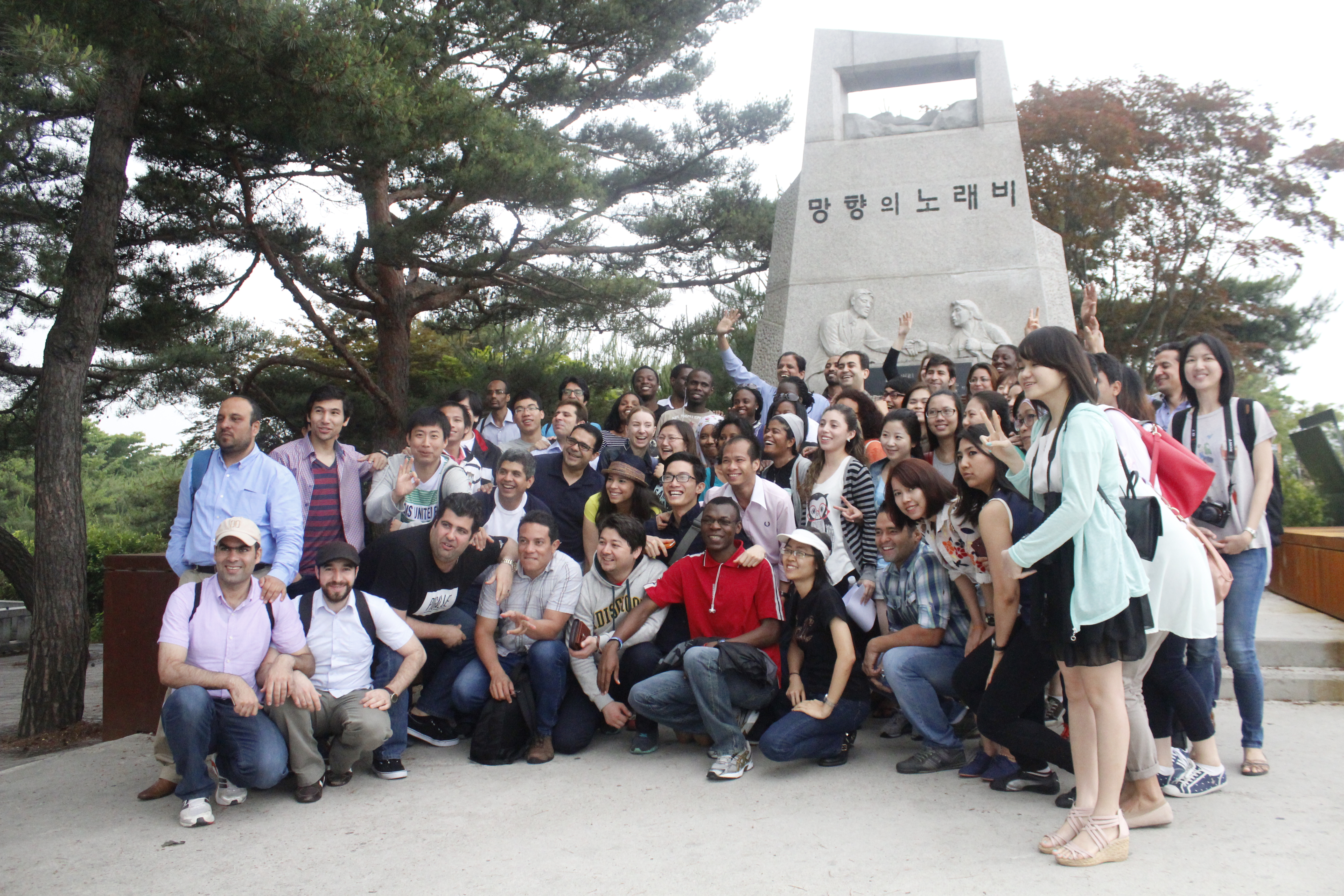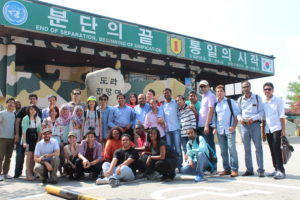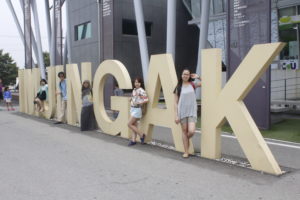
Let’s take a look at the North
- Date 2014-08-01 09:02
- CategoryNews
- Hit1739
Visit to the 3rd Tunnel
 June marks the memorial month in Korea and KDI School organized a visit to the northern border of South Korea on June 13th. Specifically, KDIS family visited the third of the four tunnels that are located in the 38th parallel north. As it is well known, the border has been established as a result of the Korean War Armistice Agreement, signed on July 27th, 1953. The Korean peninsula has been divided into South and North Korea ever since. The two sides are separated by the Korean Demilitarized Zone (DMZ) running along the 38th parallel north and serving as a buffer against direct military collisions.
June marks the memorial month in Korea and KDI School organized a visit to the northern border of South Korea on June 13th. Specifically, KDIS family visited the third of the four tunnels that are located in the 38th parallel north. As it is well known, the border has been established as a result of the Korean War Armistice Agreement, signed on July 27th, 1953. The Korean peninsula has been divided into South and North Korea ever since. The two sides are separated by the Korean Demilitarized Zone (DMZ) running along the 38th parallel north and serving as a buffer against direct military collisions.
The itinerary included many stops. The first was Nuri Peace Park (Imjingak). It is a park that symbolizes people''s wish for peace. KDIS members had time to walk around and take pictures of some relics of the Korean War, such as one old train, monuments and murals. According to Eduardo Garcia (2014 MDP, El Salvador) , it was “a bizarre feeling” to be standing there. “It is interesting that even though South and North Korea are officially in war, we can still come and visit the DMZ, and learn about Korean history at first hand.”
A ten-minute bus ride brought us to the 3rd tunnel. Since this is a place with a high level of security, all international students were required to show their passport. Before going down, there was a highly informative presentation about the existence of the tunnel in the 38th parallel. In 1978, the 3rd tunnel was designed by the North Korean government for a surprise attack to the South. Additionally, the South Korean soldiers have found other three tunnels along the 38th parallel. Nowadays, they are neutralized to prevent any infiltration of spies and any other type of threats, and it can be visited by civilians.
After checking security measures, KDIS members put on a security helmet and started to walk down the tunnel. It became humid and narrow as we went deeper; everyone followed a straight line until they got to the end and walk back. This tunnel is 1.7 kilometers long, 2 meters high and 2 meters wide. No pictures were allowed since for security purposes.

Next destination was to Dorasan observatory. The participants used tower optical binoculars to take a look at the North; that is, the other side of the 38th parallel. We could see the North Korean territory and its waving flag. This part of the trip was the most meaningful to international students. “North Korea has become such a mysterious existence in the world community that seeing it with your own eyes brings out a sense of excitement,” said Ayano Hailu Adugna (2013 MDP, Ethiopia). “However,” he added, “it is impossible not to think about the tragedy and how one country was torn into two. You can see the interest of South Korea for unification, but I wonder what the interests are of the people in the North.” This was certainly an opportunity for international students to engage with Korea’s history.
Finally, we arrived to the last stop of the trip, Dorasan Station. Part of the Gyeongi Line and located 30 meters from the southern limit, it is the last train station of South Korea heading north. The station was built to connect North and South Korea, and it symbolizes the hope for peace in the Peninsula. As stated in one of its walls, it wishes to be “not the last station from the South, but the first station toward the North.”
Visiting Dorasan Station motivated students to discuss their own thoughts about the Korean War and the opportunities of unification. For many international students this trip was on their must-do list while in Korea, and rightly so. The image of a waving flag of the North seen through the binocular lenses, so close yet so inaccessible, and the stark contrast between the seriousness of the South Korean army and the excitement of us tourists will be among many moments etched in our memory.
By Lesly Rubio Campos (2013 MPP, Guatemala)


